“Who are these people? They are the group that is popularly called the Enterprise. They are in and outside [the] CIA. They are mostly Right Wing Republicans, but you will find a mix of Democrats, mercenaries, ex officio Mafia and opportunists within the group. They are CEOs, they are bankers, they are presidents, they own airlines, they own national television networks. They own six of the seven video documentary companies of Washington, DC and they do not give a damn about the law or the Constitution or the Congress or the Oversight committees except as something to be subverted and manipulated and lied to.
They abhor sunlight and love darkness. They deal in innuendo and character assassination, and planted stories, the incomplete thought and sentence. They burn and shred files if caught, they commit perjury, and when caught they have guaranteed sinecures with large US corporations.
If you let them, they will take over not only [the] CIA but the entire government and the world, cutting off dissent, free speech, a free media, and they will cut a deal with anyone, from [the] Mafia to Saddam Hussein, if it means more power and money. They stole $600 billion from the S & L’s and then diverted our attention to the Iraqis. They are ripping off America at a rate never before seen in history. They flooded our country with drugs from Central America during the 1980s, cut deals with Haro in Mexico, Noriega in Panama, and the Medellin and Cali cartels, and Castro, and recently the Red Mafia in the KGB.
They ruin their detractors and they fear the truth. If they can, they will blackmail you.
SEX, DRUGS, DEALS, whatever it takes.”
— Bruce Hemmings, CIA Officer & Iran-Contra whistleblower
The period from 1776 to 1917 encapsulates one of the most turbulent, chaotic, and calamitous periods of all human history. Despite the catastrophic bloodshed of the Twentieth Century, the political, religious, and economic turmoil experienced during this period happened with such rapidity that it is scarcely possible to catalogue all their happenings. It was during this 141 year epoch that the Mystery religion — with the banking cartel in tow — completed their long march through Christendom. This Masoniclly led world revolutionary movement, a term first coined by Commander William Guy Carr, is an unmistakable thread running through all of the engineered chaos and orchestrated bloodshed. While the conspirators have tried their utmost to obfuscate that fact in today’s history books, the truth is a stubborn thing to stamp out.
As a result of this disastrously effective enemy offensive, all of our secular institutions — and most of our churches — have been utterly hollowed out. The outside may be the same, but the flame of righteousness, justice, and consanguinity inside has been snuffed out. To properly understand and contextualize the seemingly incongruent actions of The Regime, you must dispose of the simplistic notion that we are ruled by governments or politicians. We quite simply are not. We are ruled by criminals: an intergenerational cartel of bloodthirsty occultists that have dealt in death, drugs, and human chattel for hundreds of years. Given the sheer volume of crimes committed by the Mystery religion, it is a difficult task to determine the line where secret societies end and organized crime begins.
— The main temple of Il Grande Oriente d’Italia (The Grand Orient of Italy)
At its most fundamental level, a criminal organization is itself a secret society; they both operate under the cover of darkness; both have their own bloody oaths, initiations, and secret signs. As we will explore in this series, the historic coordination between organized crime, the Mafia, and the Mystery religion is therefore both understandable & natural. The ties go much deeper than simple marriages of convenience however. Organized crime, that being the systemization and industrialization of criminal activity — like so many other modern phenomena — draws its roots from both the Mystery religion and secret societies. For example, the Chinese Triads1, the oldest officially documented organized criminal outfit, was itself merely an outgrowth of the Chinese Mystery cults. The Triad’s founding myths, their initiations, their blood oaths: all have a decidedly Masonic flair. It is through the Masonic lodges that this intergenerational cartel has enticed the scions of our societies into their international intrigues.
"Great revolutions are the work of PRINCIPLES rather than of bayonets.
They are first achieved in the moral, and then in the material sphere.”
— Giuseppe Mazzini, 33° Freemason, Grand Master of the P-2 Masonic Lodge
The aftermath of the Third Masonic Revolution (i.e. The French Revolution) rippled out across world politics for the next century. It is consequently impossible to discuss the history of modern Italy and organized crime without the specter of the Mystery religion and its ever-skulking adherents steering the course of world events. During this era, an unmistakable pattern emerges: criminal elements (such as the aforementioned Triads) were used as political pawns to destabilize monarchies opposed to central banking and international finance. Plausible deniability is the name of the game, and before The Regime’s ascension, criminal outfits served as useful tools or useful idiots in the never ending machinations of the moneylenders.
(I have quite extensively covered the Napoleonic Era and the rise of European Masonry in my Anatomy of a Revolution series. I cover that same revolutionary movement’s activities in 19th century Japan in The Coincidence Zone: Atomic Edition Part, III.)
Since the fall of the Western Roman Empire, Italy had been divided between a warring mishmash of papal holdings, petty tyrannies, and merchant kingdoms. Much of Northern Italy fell under the grasp of Napoleon’s empire from 1797 until his first fall in 1814. Secret societies — which historically have doubled as criminal enterprises — began to flood across Italy. During that era, The Grande Oriente d’Italia was founded by Napoleon’s stepson and regent, Eugène de Beauharnais, who himself served as the first Grand Master of the Lodge. Over the next 60 years, the rotten fruits of this revolt against Christ would enthrall Italy in near constant political turmoil.
— The seal of the Carbonari is replete with layered occult symbolism, as well as blasphemous usurpations of Christian symbols. The greek letters are the lowercase Alpha and Omega. The crossed key represent the keys to Heaven and Earth, a symbol of the occultists ability to influence and control reality itself. The black and white crosses represent the esoteric idiom, “as above, so below”.
— The triband of the Carbonari.
With the downfall of France’s Masonic emperor, these groups immediately began to agitate the populace and foment unrest amongst the productive classes. It is around this time that we see the first government reports on two distinct groups with nearly identical organizational structures and methods: the Carbonari and the Camorra. The Carbonari (charcoal makers in Italian) claim their founding in the aftermath of the fall of Napoleon’s Empire. Its genesis is likely French in origin however, rather than Italian. Notable members included: Gabriele Rossetti, Amand Bazard, Silvio Pellico, Giuseppe Mazzini2, the Marquis de Lafayette3, future French emperor Napoleon III4, the English poet Lord Byron5, and Giuseppe Garibaldi6. These men are a veritable who’s who of the Italian Risorgimento, the political movement that would eventually unite all of Italy under “Italian” rule for the first time in over a millennia.
The intrigues and machinations of the Carbonari across Europe during this time are staggering in their breadth and complexity. They financed their plots through vice and crime of varied sort, from murder-for-hire to kidnapping. They were not simply a working class gang, or a socio-political movement of the movers and shakers of the modern world: they were avowed occultists whose rituals not only involved the invoking of demonic entities, but the blaspheming of Christian icons and rituals — such as the Holy Communion. Despite the diffusion of their organizations across various kingdoms and nations, the Carbonari were united by one common goal (emphasis mine):
Our final end is that of Voltaire and of the French Revolution, the destruction forever of Catholicism and even of the Christian idea…
— Permanent Instruction of the Alta Vendita
Like the Jacobins of France, the Carbonari were godless by decree, violent by nature, and heretical in the extreme.
The dire threat posed by this web of Kabbalistic kleptocrats was explicitly noted by Pope Pius VII, in his 1821 papal decree:
We are also moved by the example of Clement XII and Benedict XIV, our Predecessors of happy memory, of whom the one on the 28th day of April of the year 1738 by the Constitution In Eminenti, the other on the 18th day of March 1751 by the Constitution Providas, have condemned and proscribed the societies de` Liberi Muratori, or Francs-Macons, or called by whatever other name according to the variety of regions and idioms, of which societies the society of the Carbonari, must be considered perhaps the offspring or certainly the imitation.
— Ecclesiam a Jesu Christo (1821)
The obvious similarities and affiliations between organized Freemasonry and the Carbonari make it almost a distinction without difference. This is the strength of the Mystery religion, as she can appear in whatever form suits her to ensnare the hearts of insouciant men. As with all Mystery cults, their hatred of Christ and His Church is what truly unites these disparate organizations and occult societies.
— A Meeting of the Carbonari, ill. by Mary Evans Picture Library
The latter group, the Camorra, were the predecessors upon which the Sicilian Mafia was eventually founded. Originally, the clans emerged as the enforcers of wealthy landowners, but in the wake of the 1848 revolutions, the Camorra and Mafia clans began to work in tandem with the revolutionists (emphasis mine):
In 1861, Sicily became a province of recently unified Italy. However, chaos and crime reigned across the island as the fledgling Italian government tried to establish itself. In the 1870s, Roman officials even asked Sicilian Mafia clans to help them by going after dangerous, independent criminal bands; in exchange, officials would look the other way as the Mafia continued its protection shakedowns…
…the Mafia clans expanded their criminal activities and further entrenched themselves in Sicilian politics and the economy. [They] became adept at political corruption and intimidated people to vote for certain candidates, who were in turn beholden to the Mafia. Even the Catholic Church was involved with Mafia clans during this period, according to Raab, who notes that the church relied on Mafiosi to monitor its massive property holdings in Sicily and keep tenant farmers in line.
— Origins of the Mafia7
Like modern times, their agents had infiltrated the highest levels of the church, government, and law enforcement. Salvatore De Crescenzo, the head of the Sicilian Camorra at that time, was effectively made police chief of the whole of Sicily. The destruction of independent criminals gangs served not only to strengthen the Mafioso’s and Camorrista’s, it crucially allowed the Mystery religion to centralize their control of not just currency, but crime as well. Whether the Camorra clans were actually in favor of democracy and liberal governance is almost irrelevant: their actions were integral to the birthing of the Masonic Kingdom of Italy.
The most notorious of Italy’s Masonic revolutionaries was Giuseppe Mazzini, and that revolutionary fervor ran in his blood. His father, Giacomo Mazzini, briefly joined the Augustinian Order before leaving after two years to become a physician. Giacomo was a vocal supporter of the Jacobin revolution within France, hoping to see that same outbreak of “enlightenment” within his birth nation. After the French invasion of Italy in 1797, he became a propagandist for Napoleon’s newly established puppet regime, writing for the Jacobin newspaper Il Censore Italiano (The Italian Censor). He would quickly rise within the Genoese government, eventually becoming a member of the taxation committee. With the fall of Napoleon’s Italian puppet regime in 1814, Giacomo left Genoese government and became a professor of anatomy, physiology, and biology at Genoa University. The elder Mazzini’s days as a political dissident were over, but his only son was just getting started.
— Giuseppe Mazzini, founding father of modern Italy.
The younger Mazzini’s predilection for politics and democracy was evident, and his skill as a writer was honed from youth. While at Genoa University, Giuseppe was inducted into the Grande Oriente d’Italia, quickly rising up the ranks of both Masonry and the Carbonari. He was a prolific writer and political theorist, writing some 30 political treatises during his life. While he was a vocal Italian nationalist, he dreamed of a day where Europe would be united in a confederation of states, a concept akin to today’s European Union. Mazzini’s revolutionary activities within Italy were put on hold however when he was arrested and exiled to France in 1831. It was in France that Mazzini founded the “Young Societies” movements that would play pivotal roles within not just the 19th century Masonic revolutions, but the 20th century Turkish and Russian Revolutions as well. These groups functioned like many other secret societies, uniting disaffected aristocrats, unscrupulous politicians, and young intellectuals in the pursuit of “enlightened” revolution.
In 1837 Mazzini moved to London, where he spent the next 11 years of his life. John Stuart Mill, the famed British philosopher, said that by this time Mazzini was "the most eminent conspirator and revolutionist now in Europe”. In Mazzini’s own words, England was his “real home, if I have any”, and he held deep affection for the British isles. Regardless, he still returned to Italy in 1848 to lead the revolt against the Austrian rulers of Vienna. After the failure of the Masonic 1848 revolts, he was exiled once again. The last two decade of his life were largely spent on the run as physical infirmity began to set in. Mazzini smuggled himself back into Italy under the pseudonym “John Brown” in 1871, where he would die shortly afterward while fleeing from Italian authorities.
— The Duties of Man by Giuseppe Mazzini, a copy of which now resides at the Great Lodge of the Great East of Italy, Grand Orient of Italy.
Like America, France, & Japan, Italy’s revolution brought sweeping economic changes to the country. Shortly after the final unification of Italy in 1871, the first national banking cartel of Italy would be established in 1873. After years of risky loans and embezzlement, one of the six national banks authorized to issue fiat collapsed (the problem), culminating in the Banca Romana scandal of 1893 (the reaction). In much the same pattern we saw in France or Japan, Italy's major banking houses inevitably established the Central Bank of Italy in the wake of this scandal (the solution).
Are you starting to recognize their pattern yet?
“Few appear to understand that any true progress will be fatally impossible in Italy, until every effort at emancipation shall proceed along the three inseparable bases of unity, LIBERTY, and independence.”
— Giuseppe Mazzini, 33° Freemason, Grand Master of the P-2 Masonic Lodge
Far from being a thing of the past, the long standing fraternal ties between the Sicilian Mafia and Freemasonry continue to this day. In the early 1990’s, the Italian government began a series of judicial and legislative inquiries into the systemic organized criminal elements within their country. The Italian legislature thoroughly details this long running and interwoven relationship (emphasis mine):
The fundamental ground on which Cosa Nostra's [The Mafia’s] relations with representatives of public authorities and private professions are established and strengthened is represented by Masonic lodges. The bond of Masonic solidarity serves to establish organic and continuous relationships.
The entry into the lodges of exponents of Cosa Nostra, even of high level, is not an episodic and occasional fact, but corresponds to a strategic choice. The oath of loyalty to Cosa Nostra remains the central commitment to which men of honor are primarily bound. But the Masonic affiliations offer the mafia organization a formidable tool to extend its power, to obtain favors and privileges in every field: both for the conclusion of great deals and for the "adjustment" of processes, as numerous collaborators of justice have revealed.
— Report on Relations Between Mafia and Politics, Pg. 59
The report makes it stunningly clear for us: the Italian Mafia influences politics via Masonic lodges. The mistake that this report makes is to assume that the Mafia is hijacking Masonry; it is in fact the Mystery religion, represented by Masonry, that is instead using both the criminals and the politicians (but I repeat myself) for its own ends.
— Crafting A Cartel, digital art, 2023.
In our day & age, organized criminal outfits continue to serve as de facto extensions of state power. Simply put, these entities can only exist through the tacit or explicit endorsement of the state. We are talking about multi trillion dollar industries here: some of these cartels gross more money per year than Wal-Mart does. This level of criminal activity can only thrive when state power has decided to overlook or collude with such an enterprise. Part II of this essay will further explore this concept and illustrate the very real and tangible ways The Regime and War, Inc. have directly contributed to the flourishing of organized criminality.
For the last four centuries, the political goals of the Mystery religion have been birthed through the efforts of its voluminous criminal enterprises disguised as secret societies.
While some of these occult denominations have leaned more heavily to one direction or the other on this spectrum, their close cooperation and nearly identical methods are inescapable.
Curated criminal chaos has always created the conditions for their Masonic order to arise.
“Mafia is a PROCESS, not a thing.
Mafia is a form of clan - cooperation to which it's individual members pledge lifelong loyalty....
Friendship, connections, family ties, trust, loyalty, obedience - this was the glue that held us together.”
— Don Giuseppe Carlo Bonanno, head of the Bonanno Crime family


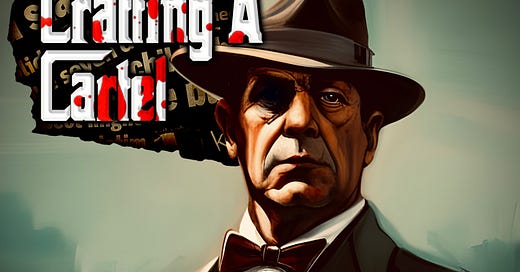





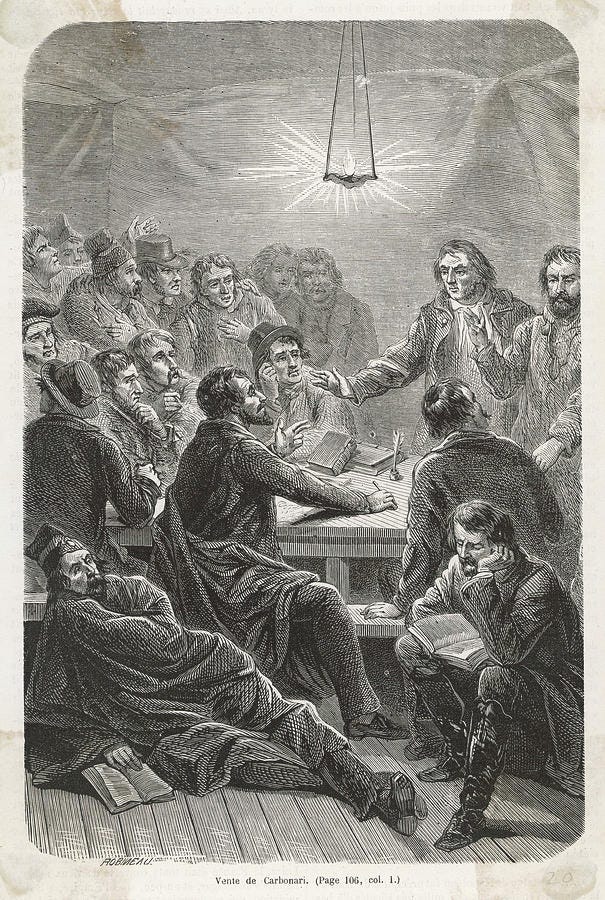

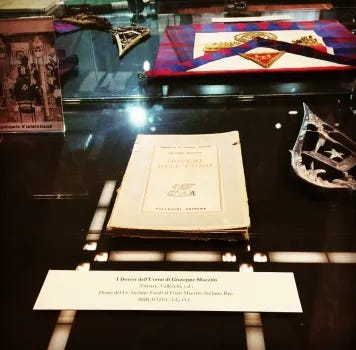
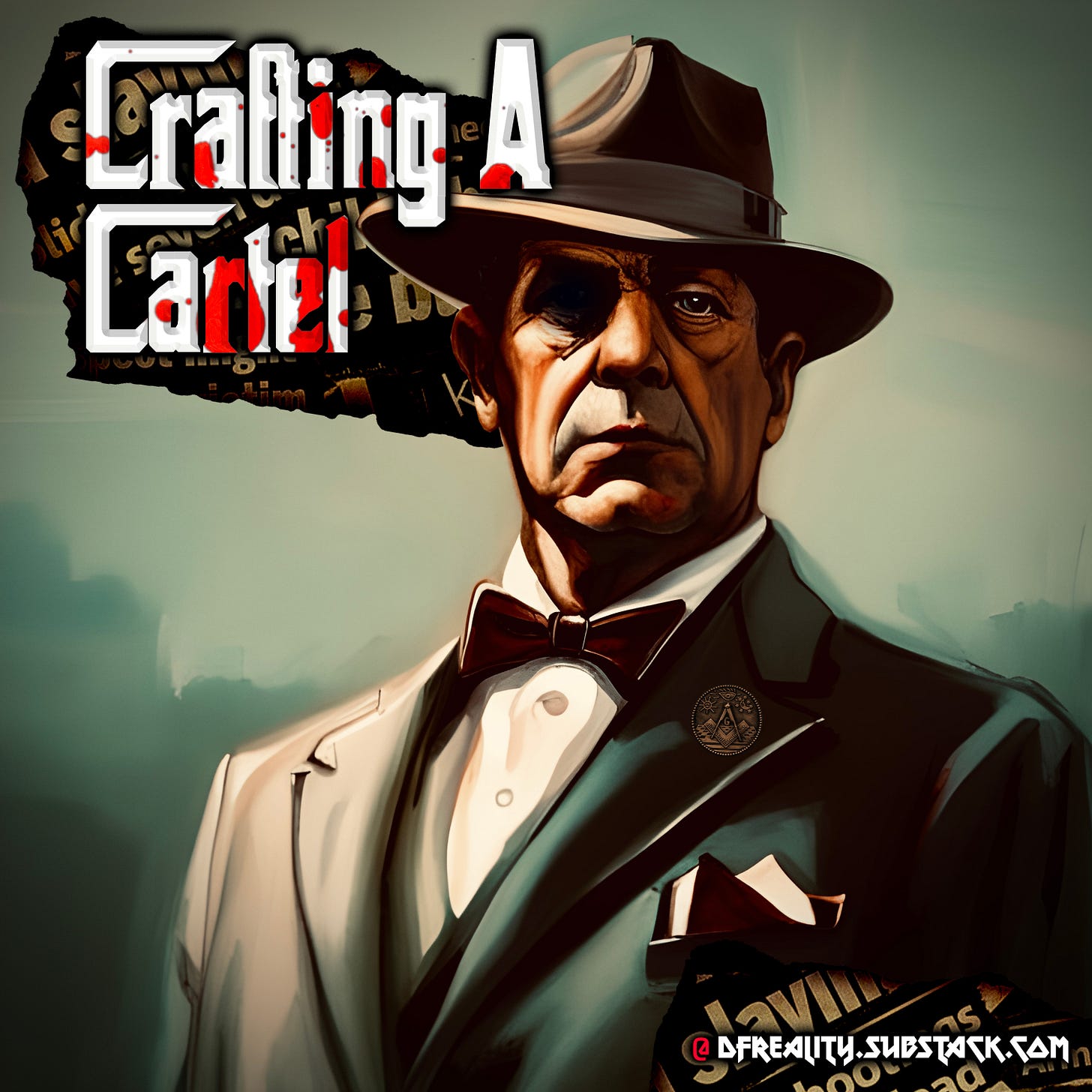
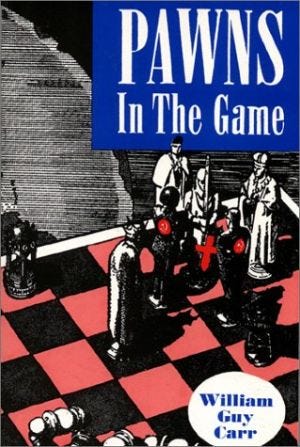
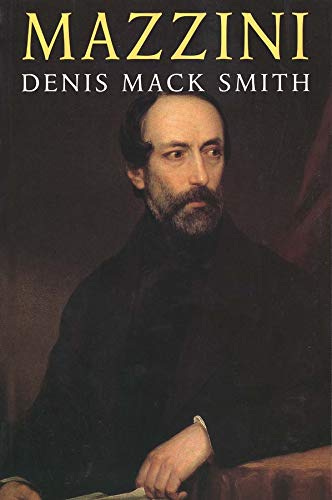
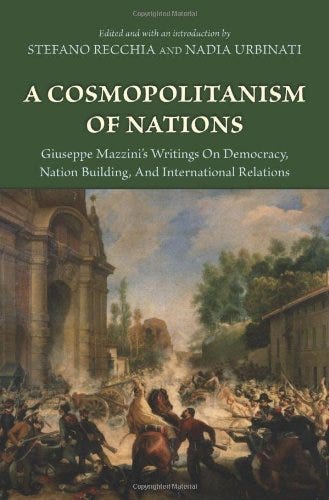

Well, it will not be a surprise to you that most prominent members of Italian mafia were jews. At least according to the thread on gab in which I saw their ancestry displayed. Yeah, I cant check the validity of such claims other than does it look legit on the surface, which it did.
But isnt it logical that Mafia is yet another jewish enterprise? It is kinda obvious just by the character of that vile organization.
Cheers mate!
Very interesting and well-researched; my own research of the Italian crime cartel masquerading as democracy was piqued when I read Mario Puzo's posthumously-released final novel, "The Family," though whetted originally by Machiavelli's "The Prince," which was inspired by Cesare Borgia too.
https://en.wikipedia.org/wiki/The_Family_(Puzo_novel)
Cesare Borgia was the illegitimate son of a "Spanish" cardinal, Rodrigo Borja, who later became Pope Alexander VI. The Borgia name originates in Valencia circa 15th C. Spain; but after uniting with Catalonia around 1150, Valencia and Aragon were home to numerous thriving Jewish communities, referenced here: https://jguideeurope.org/en/region/spain/aragon/
So the Church was infiltrated probably before the end of the first millennium, but not seized all at once: the Jews still had the Inquisition to look forward to, and millions of Christians yet to kill. But definitely after, in the 16th C., when chaos agents like Cesare Borgia set upon the Italians. This is absolutely why the Northern Italians do not want their genealogy done: it would expose their Jewish roots.
I have more to say, but it is about Masonry, and I will wait eagerly for your next installment before discussing it.